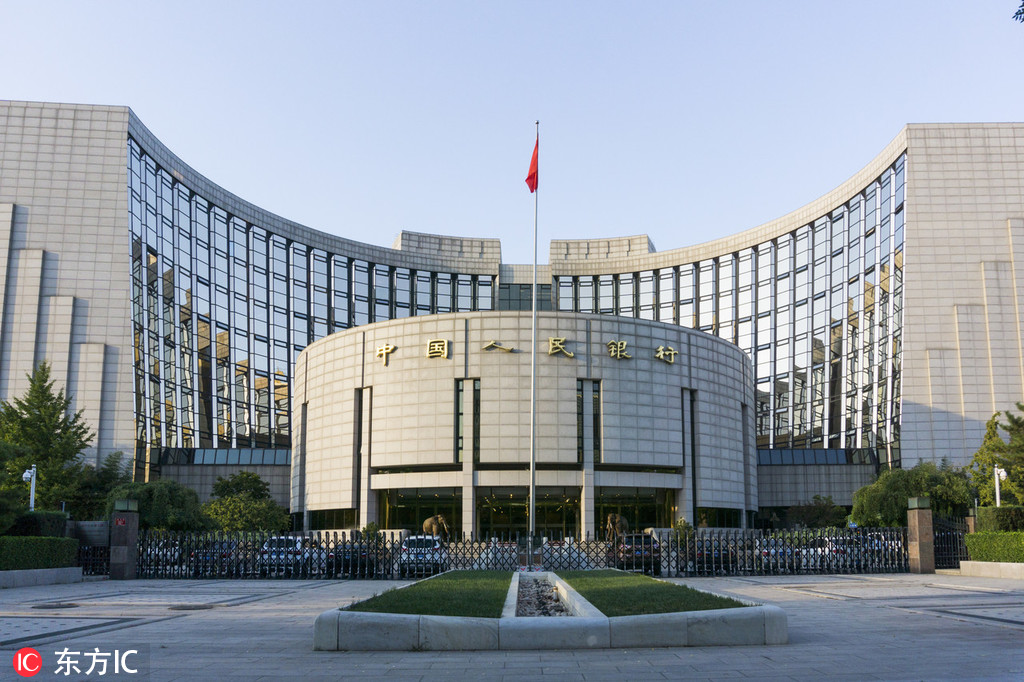Regulator plans to come out with measures for large, key companies
By Chen Jia | China Daily | Updated: 2019-09-03 10:59

China's financial regulatory body is planning to require "too big to fail" conglomerates to replenish capital and meet new regulatory requirements, a measure to prevent cross-market risk contagion and continually reduce the corporate debt level.
New standards of capital adequacy ratio are under discussion among policymakers to curb the "barbaric growth" of large financial holding groups through high-leveraged mergers and acquisitions of financial institutions, according to analysts.
The capital adequacy ratio is an important gauge to monitor financial institutions' risk, regarding the percentage of total assets to the risk-weighted assets plus current liabilities. Adequate capital could be a cushion against shocks that may result in debt default and bankruptcy.
In response to the global financial crisis in 2008, worldwide financial reform has focused on capital adequacy requirements, especially for global systemically important financial institutions.
This time, China will refresh standards for financial holding groups, amid a trend of further tightening regulations. The government has determined to continually crack down on financial risks, even when economic growth is under pressure, said experts.
The capital adequacy ratio for financial holding groups could be set the same as the existing level for systemically important financial institutions, generally between 8 to 11 percent depending on different types of business, such as banking, insurance and wealth management, according to experts and executive managers of some financial holding groups.
The new standards could be even higher, said some experts involved in discussions with the People's Bank of China, the nation's central bank.
The current maximum ratio for commercial banks was set at 8 percent in line with the renewed standards of the Basel Committee, a Switzerland-based union of global financial supervisors.
Specific details of the capital adequacy rules will be released later, said the PBOC. It posted a draft of regulations on financial holding firms two weeks earlier.
The PBOC has just completed the procedure of seeking public opinion on the draft, warning that without proper regulations, "too-big-to-fail" financial holding firms and complicated financial transactions within a group may foster systemic risks.
Large financial holding groups, as the central bank identified, generally have registered assets exceeding 500 billion yuan ($73 billion). The group's registered assets should account for at least 50 percent of the total asset holdings by their subsidiary financial institutions. The financial subsidiaries can offer various services including banking, insurance and fund management.
Besides State-owned groups, such as China Merchants Group, large privately-owned conglomerates are also on the supervision list, including HNA Group Co, Fosun International Ltd, China Evergrande Group, and Tomorrow Holding Co. In addition, it covers some of the country's internet giants, such as Alibaba and Tencent, according to the financial regulatory body.
Financial risk is concentrated in groups that expanded too fast through increasing debt and internally connected transactions, a PBOC official said in an earlier interview.
Some large groups also accelerated overseas expansion through acquiring financial institutions. The subsidiaries' funds can be used as a base for leveraging more money, the official added.
Risk management becomes one of the key concepts of regulation on financial holding firms, said Hong Xiaoyuan, Chairman of the Executive Committee of China Merchants Financial Services Unit, in an interview with China Daily.
The new rules require large financial groups to meet a certain level of capital adequacy, further strengthen their risk management and establish explicit obligation to render bailout for their subsidiaries, according to Hong.
"For the next step, (the regulation) will be based on combining the balance sheets of subsidiaries, and to introduce specific regulatory rules on the capital adequacy level," the PBOC said in a statement.
State-owned Beijing Financial Holdings Group is preparing for a full-scale supervision network to control financial risks, based on fintech and big data, in order to meet the higher standards, according to a document from the group.
Regulators will encourage financial holding groups to replenish capital by making financial instruments, and one of the tools could be a perpetual bond, said analysts.
According to the central bank, by the end of 2016, about 70 State-owned enterprises controlled a total of over 150 financial subsidiaries. The authorities have already taken action to curb over-leveraged acquirers and rein in the sprawling shadow-banking system.
"Through clarifying some red lines of regulations, it emphasizes that all the capital source of financial holding firms should be authentic and adequate, which will help to constrain the large groups' unlimited sprawling driven by high-leveraged investment," Hong added.
"The capital adequacy requirement, which should match the asset size and risk profile, will be an effective cushion to take loss in case of risk events," he said.
























